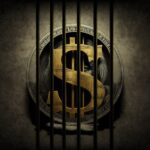January 13, 2022 –– In opinions released this afternoon, the Supreme Court split over two of the Biden Administration’s COVID-19 mandates. By a vote of 6-3, in NFIB v. OSHA, the Court ruled against the Occupational Safety and Health Administration’s Emergency Temporary Standard vaccine-or-test rule for companies with 100 or more employees.
Latest Updates: Following a November 12 decision by the U.S. Court of Appeals for the 5th Circuit, OSHA announced on November 17 it has suspended implementation and enforcement of Biden’s vaccine mandate. OSHA stated it will comply with the 5th Circuit’s court order. On November 23, in a filing with the U.S. 6th Circuit Court of Appeals, the Biden administration asked a federal court for an emergency ruling to lift the court-imposed stay blocking the vaccine mandate.
The 6th Circuit court ordered briefing on OSHA’s motion to dissolve the 5th Circuit’s stay on enforcement, gives all parties until Nov. 30 to file their motions, with responses due December 7, and any replies by December 10.
That means the briefing will run past December 6, the regulation’s first major compliance deadline. The rule called for employers by that point to develop a vaccine policy, determine employee vaccination status, and provide leave for worker vaccination or recovery.
On December 3, the court rejected the Biden administration’s proposed due dates for an expedited briefing schedule with a target of Dec. 29, 2021 – and oral arguments thereafter. Motions to transfer the case elsewhere (en employer request to send it back to the 5th Circuit and a union petition to transfer it to the D.C. Circuit) were also denied.
Nearly 30 lawsuits filed nationwide over the OSHA ETS have now been brought together in a single case in the 6th U.S. Circuit Court of Appeals, based in Cincinnati, Ohio.
All of the challenges to the OSHA ETS will now be consolidated before a three-judge panel of 6th Circuit judges in Cincinnati. That panel, which has not yet been named, will have the opportunity to lift or retain the stay that the 5th Circuit ordered on November 6, and reaffirmed on November 12.
On December 17, the 6th Circuit vacated the stay of OSHA’s vaccine mandate. OSHA delayed implementation of the emergency temporary standard until January 10. A special hearing in the Supreme Court will be held on Friday, January 7. The Court’s decision to schedule a hearing on the emergency stay applications pending is almost without precedent.
The United States Supreme Court will have the final word.
Procedural Note: On November 22, twenty-seven states filed a petition for initial en banc review, which would bypass panel review entirely and send the case to be decided by all active judges. There are now several initial-en banc petitions pending in these consolidated cases. OSHA’s consolidated response to those petitions is due November 30, 2021.
On September 9, 2021, President Biden announced a plan to require all private employers with 100 hundred or more employees to ensure that their workers are fully vaccinated against COVID-19, or produce a negative COVID-19 test each week.
This vaccine mandate, part of a larger effort designed to require more than 100 million Americans to get vaccinated, has recently been implemented through an Emergency Temporary Standard (ETS) issued by the U.S. Department of Labor’s Occupational Safety and Health Administration (OSHA).
OSHA releases its Emergency Temporary Standard (ETS) requiring COVID-19 testing or vaccination in private workplaces
As the Biden administration instructed, the ETS requires all employers with 100 or more employees, firm-wide, to either require employees receive COVID-19 vaccinations or submit to weekly COVID testing and wear masks in the workplace.
The ETS is published as a so-called interim final rule. Although employers and the public will be able to comment during the interim period, it will become effective immediately in federal OSHA-jurisdiction states.
Some U.S. states are not direct federal OSHA-jurisdiction states but rather have their own private sector plans. Those 21 states (and Puerto Rico) will be required to develop their own vaccine mandate rule within 30 days of the publication of the new ETS.
The result is a 490 page rule with preamble. (The ETS itself is only 17 pages, and is at the end.)
Here’s what you need to know:
1. Vaccination and testing mandate is set for January 4, 2022 deadline
The rules will require workers to receive either two doses of the Pfizer or Moderna vaccines or one dose of the Johnson & Johnson vaccine by January 4 or be tested weekly. Employees who test positive must be removed from the workplace.
2. Employees will be counted on a company-wide basis.
Employees will be counted on a company-wide basis for the coverage threshold rather than just at a particular location. Employers should count all employees on their payroll (not just full-time employees) to be safe.
3. Employers are not required to provide or pay for testing.
Companies won’t be required to provide or pay for the tests, but they must give paid time off for employees to get vaccines and sick leave to recover from side effects that prevent them from working. The requirements for masks and paid time off for shots will take effect December 5.
Tip: Pixel by LabCorp offers small business COVID-19 test collection kits for employers that choose to provide employees with easy COVID-19 tests for one-time or ongoing business testing. Small businesses can order multiple kits at a time and distribute as needed.
4. OSHA allows some leeway for the use of face masks.
Face masks are not required “when an employee is alone in a room with floor to ceiling walls and a closed door,” “while the employee is eating or drinking at the workplace or for identification purposes in compliance with safety and security requirements,” or “where the employer can show that the use of face coverings is infeasible or creates a greater hazard.”
5. Employers must keep thorough records.
A procedure for collecting proof of vaccinations or negative tests and the confidential maintenance of these records for an OSHA inspection should be put in place. Employers have to “determine the vaccination status of each employee, obtain acceptable proof of vaccination from vaccinated employees, maintain records of each employee’s vaccination status, and maintain a roster of each employee’s vaccination status.”
6. OSHA plans to enact hefty fines for non-compliance.
The Occupational Safety and Health Administration (OSHA) said any companies that don’t abide by the rules could be hit with nearly $14,000 in fines per violation, the Associated Press reported.
OSHA plans to send out agents to check that workplaces are in compliance with the rule. For willful violations, a company can be fined up to $136,532. The standard penalty is $13,653 for a single violation.
7. OSHA is considering an ETS expansion to small businesses.
OSHA will consider expanding the vaccine mandate to smaller businesses with fewer than 100 employees during a 30-day comment period, according to the U.S. Labor Department.
8. OSHA allows for religious exemptions – EEOC has updated its guidance
OSHA assumes all unvaccinated employees subject to an employer mandate will be vaccinated under that employer mandate, except for those seeking a medical or religious exemption.
Employers must establish and implement a written mandatory vaccination policy that addresses sincerely-held religious beliefs, practices, or observances that conflict with the vaccination requirement.
Employees must also inform their employers if they intend to seek a religious exemption. The new EEOC guidance states employers should assume a worker’s professed religious beliefs are sincere, but an employer can seek more facts.
A sincerely-held religious belief continues to include non-traditional religious beliefs, but excludes social, political, or economic views, or personal preferences. Limited factual inquiries about sincerity of beliefs are allowed and employees must cooperate and respond to an employer’s reasonable factual inquiry to verify the sincerity of the belief.
The EEOC has provided employers a sample Religious Accommodation Request Form.
9. Employees who don’t report to a workplace, work from home or work outdoors are exempt.
The OSHA ETS exempts employees who don’t report to a workplace or work from home or outdoors. OSHA’s grave danger determination exempts several categories of workers based on characteristics of their work or workplace.
According to OSHA, “For those who work from their homes, or from workplaces where no other people are present (such as a remote worksite), the chances of being exposed to SARS-CoV-2 through a work activity are negligible. Therefore, OSHA is exempting those workers who do not come into contact with others for work purposes from its grave danger finding as well as the scope of the ETS.”
10. Employers who adopt a mandatory vaccination policy can comply with the ETS even if some employees are not actually vaccinated.
OSHA allows the following exceptions: “those for whom a vaccine is medically contraindicated, those for whom medical necessity requires a delay in vaccination, or those legally entitled to a reasonable accommodation under federal civil rights laws because they have a disability or sincerely held religious beliefs, practices, or observances that conflict with the vaccination requirement.”
It seems this category of workers who classify as unvaccinated employees don’t have to wear masks or be tested each week, since those safeguards apply only to businesses that require employees to choose between vaccination and testing plus masking.
Legal challenges are imminent
OSHA’s poor track record in defending prior emergency standards suggests this one may be legally vulnerable.
Since its inception, OSHA has only issued ten emergency standards, with varying levels of legal success, leaving the new ETS vulnerable to legal challenge for a lack of precedent.
Of the nine emergency standards issued between 1971 and 1983, three were not challenged. Of the six that were challenged in court, four were stayed or vacated, one was partly vacated, and one was upheld. In other words, legal challenges were partly or fully successful 83 percent of the time.
The latest ETS is sure to be met with fierce legal challenges from state governments, private businesses and trade groups alike. The issues include whether COVID can be considered a “grave danger” to employees in the workplace (not merely a “significant risk”), and whether these requirements can be considered “necessary” (as opposed to merely “reasonably necessary or appropriate”) to address the danger.
Jonathan H. Adler, a Professor of Law and Director of the Coleman Burke Center for Environmental Law, adds: “one problem OSHA faced is that imposing the requirement on employers based upon the total number of employees would not fit well with OSHA’s authority to address workplace risks and would be legally vulnerable as the size of an employer is a poor proxy for the risk of COVID to unvaccinated employees.”
None of this means lawsuits challenging OSHA’s latest ETS will succeed. But it would be a mistake simply to assume, as The New York Times does, that “OSHA has the authority to introduce a vaccine mandate.” Whether OSHA actually has that authority—and if so, how far it extends—is something the courts will have to determine.
© YFS Magazine. All Rights Reserved. Copying prohibited. All material is protected by U.S. and international copyright laws. Unauthorized reproduction or distribution of this material is prohibited. Sharing of this material under Attribution-NonCommercial-NoDerivatives 4.0 International terms, listed here, is permitted.





